- Details
- Written by Gordon Prentice
The Toronto Star tells me this morning that the new Chair of Metrolinx is Donald Wright, a former chair of Via Rail. He takes over from Rob Prichard who resigned in July following the change in Government.
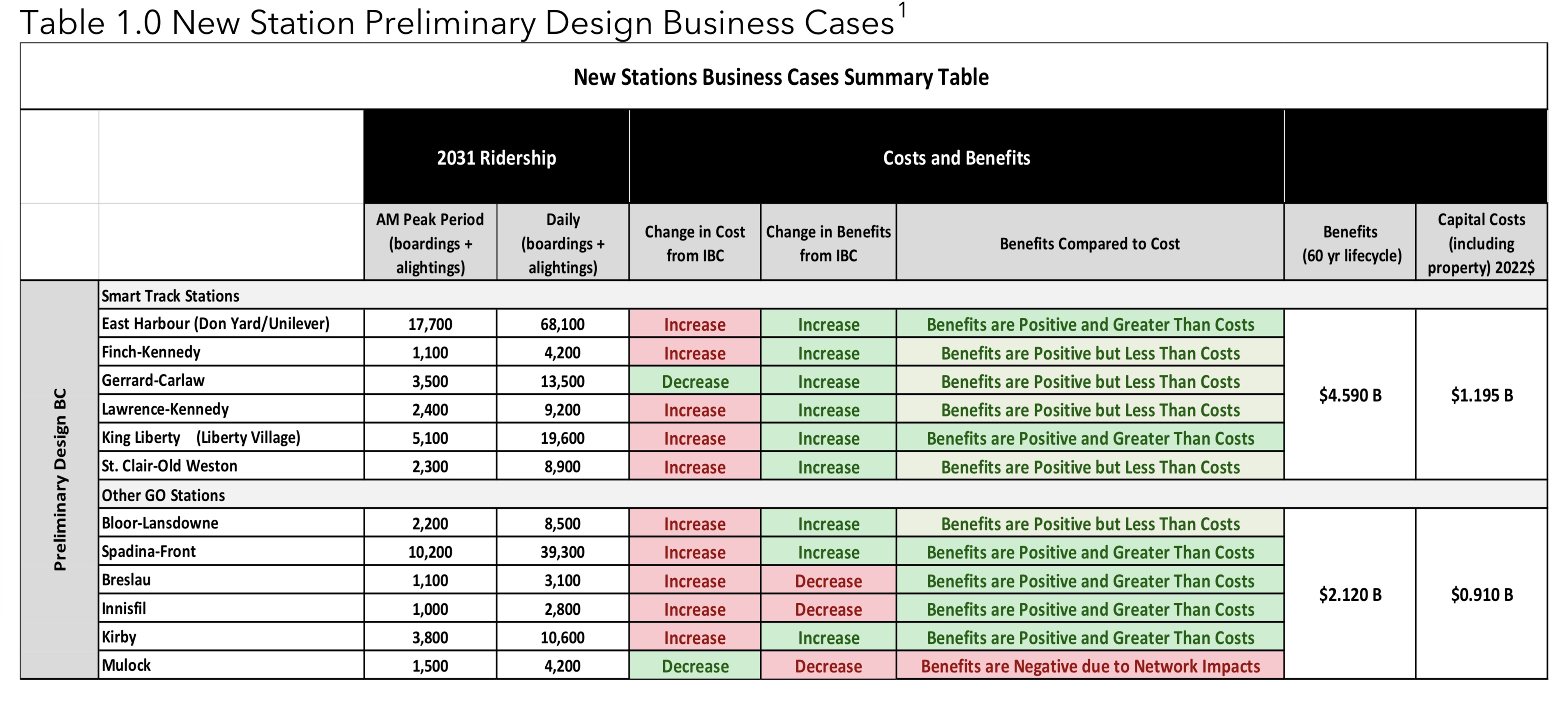
At the next Metrolinx Board meeting on Friday 14 September 2018 I hope he will find some time to consider the impact of level crossings on the Regional Express Rail program. Level crossings are inimical to fast and frequent GO trains. But the alternative - grade separation - is hugely expensive.
This is a big issue here in Newmarket where the busiest road in Town – Mulock Drive – is to keep its level crossing.
I wrote to the previous Chair of Metrolinx about this on 3 March 2018 (see below) and I expected my comments to be circulated to Board members prior to the Board meeting on 8 March 2018 – in line with Metrolinx Board policy.
“All comments received at least (12) hours before the scheduled Board meeting will be provided to the Board for consideration at its meeting, and subsequently posted online with the related meeting materials.”
I thought the issue was important enough for there to be a short discussion so I take myself down to Toronto and sit in the front row within touching distance of the Board table. I don’t want to miss anything. No-one mentions level crossings. The moment passes and the Chair moves on to the next item on the agenda.
I turn to the guy sitting next to me to express my frustration and I discover I am talking to the Director of Stakeholder Relations, Rajesh Khetarpal. He says gently that I am sitting in a seat reserved for staff. Hmmm.
I apologise and then explain the issue, giving him the main bullet points. He promises to look into it for me but, alas, there is radio silence for a couple of months. He gets back to me on 15 May 2018:
“I am following up with our project teams and will circle back with you shortly.”
I haven’t heard anything since. Clearly, Rajesh is still circling.
Town spends $250,000 on Plan to support the case for a new Station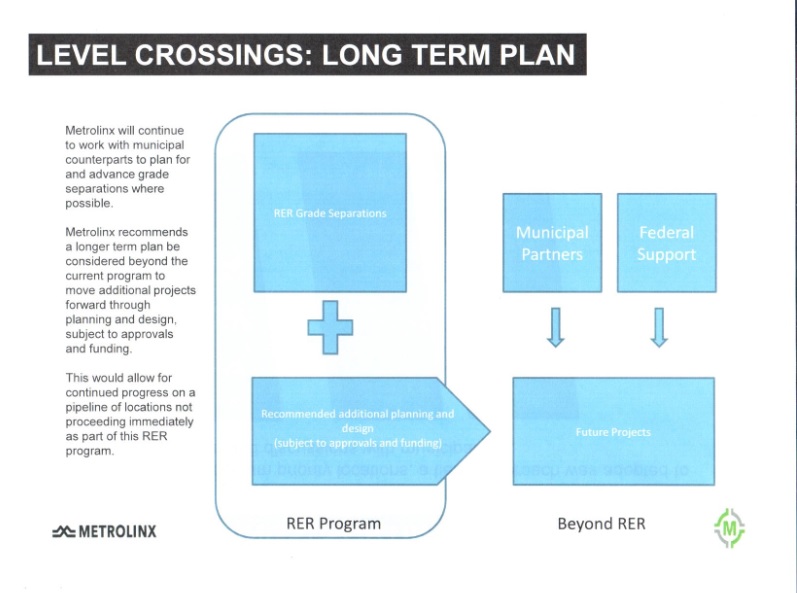
Meanwhile the issue hasn’t gone away. The Town has committed $250,000 to develop a Secondary Plan for the Mulock Station area in the expectation the proposed station will be given the go-ahead. The new study, now underway, aims to show the GO Rail station at Mulock will have a catchment area that will generate train ridership.
The Metrolinx Board is scheduled to decide the final list of new GO rail stations on the Barrie line at its meeting in October. But, as it stands, Metrolinx calculates that the costs of Mulock Station outweigh the benefits.
Who knows how Premier Ford would react to this? (I think I know.)
For the moment I am assuming the Regional Express Rail program is not abandoned but is severely pruned. Ford will be looking for cost savings and I am pretty sure he won’t be shelling out millions of dollars for grade separations even when, objectively, it can be shown they are required.
Which brings me back to my original question.
How does Metrolinx propose to deal with grade separations and level crossings?
I am still waiting to hear from the Director of Stakeholder Relations.
But Donald Wright may have a view.
This email address is being protected from spambots. You need JavaScript enabled to view it.
The email exchanges:
To Rob Prichard, Chair of Metrolinx, on 3 March 2018:
I have written to you before about developments on the Barrie line and appreciate the time you have taken to respond to my concerns.
I am concerned that Metrolinx may be about to abandon grade separation at Mulock Drive in Newmarket which is to be home to the proposed new Mulock GO Rail Station.
Mulock Drive is the busiest road in Town.
At your Board meeting next week you will have before you the New Stations Business Cases Technical Report 9 which says:
“The grade separation will not be developed as part of this project, but will not be precluded from future consideration.”
The aim is to
“identify a design solution that does not require the grade separation. The design does not preclude a future grade separation at Mulock Drive, which will be considered separately as part of a system-wide rail crossing analysis.”
An earlier report to the Metrolinx Board in July 2016 which set out the initial business case said
“Mulock not feasible without grade separation.”
What is now making it feasible?
Technical report 9 talks of “deliverability and operational challenges with grade separation”:
“The model shows that the performance of Mulock station is impacted by its proximity to Aurora station. Aurora station, which is immediately downstream, is the proposed terminus end point for more frequent electrified service on the Barrie corridor. Significant ridership growth is expected at upstream stations, including Newmarket and East Gwillimbury stations; therefore Mulock station would delay additional riders that travel through the station to points further south.
Travel time savings are expected to be limited for users of Mulock station, since many users would save wait time by driving to Aurora station. Exploration of possible alternate GO Expansion RER service pattern (e.g., extension of 15-minute service further north) is underway and would impact Mulock station’s performance. Corridor-level changes are being examined as part of a broader study of the service patterns on the Barrie corridor.”
The answer is to extend the 15 minute service (which terminates in Aurora) north to Mulock.
If Metrolinx decides against grade separation at Mulock and at Davis Drive (both areas slated for growth) I hope the land required for any future grade separation will be identified and passed to the Municipality to ensure it is properly safeguarded and not developed.
Yours sincerely….
To Rajesh Khetarpal on 8 March 2018:
I sat next to you at the Board meeting this morning.
Thank you so much for agreeing to get some information to me on the level crossing study and when it is likely to be completed. I am specifically interested in the Barrie Corridor but I think the study is network wide.
The proposed new Mulock station is now to proceed without grade separation. The initial business case told us that grade separation was needed and without it Mulock was not viable.
I emailed the Chair, Rob Prichard, a few days ago outlining my concerns and half expected the grade separation issue to be raised today.
As I understand it the final business case for the proposed new stations will go before the Board in October 2018 followed by the procurement exercise.
Am I correct in thinking the Municipality has six months in which to persuade Metrolinx to reinstate grade separation at Mulock Drive?
To Rajesh Khetarpal on 28 March 2018:
I was sitting next to you at the last Board meeting and chatted briefly.
I wonder if you have any information to give me on the level crossing study - its timeline and what it will look at. Specifically, when is it due to report to the Board?
I should be grateful for any update.
To Rajesh Khetarpal on 15 May 2018:
I wonder if you have now had an opportunity to consider the email I sent you on 28 March 2018 which, for ease of reference, I have pasted below.
From Rajesh Khetarpal to me on 15 May 2018:
My sincere apologies for the delayed response... I am following up with our project teams and will circle back with you shortly.
- Details
- Written by Gordon Prentice
This afternoon I wander along to the constituency office of my MPP, Christine Elliott, to make an appointment to see her. 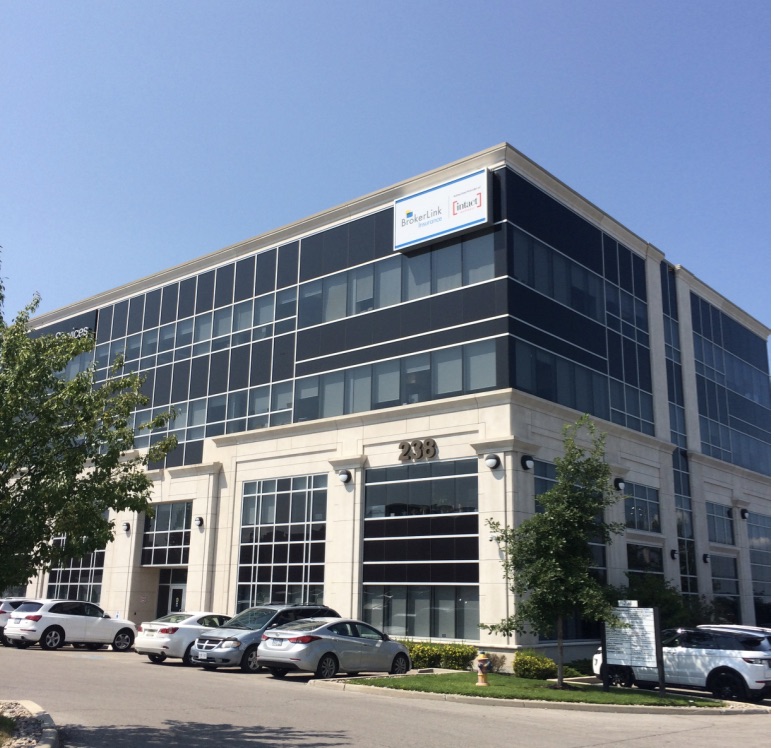
238 Wellington Street East is quite an imposing building whose tenants are largely in the financial services sector. An elevator whisks me up to the second floor and Suite 203. A frosted glass panel bears the coat of arms of the Legislative Assembly.
Inside I introduce myself to Sarah who is sitting behind a desk. I say I wrote to Christine two weeks ago about the cancelled elections for Regional Chairs and I have not had any response despite a reminder.
I say the issue is urgent as Bill 5 (cutting the size of Toronto City Council by half and axing the elections for Regional Chairs) is barreling its way through the legislature and could become law at any time. There is to be no public consultation.
I want to ask Christine what she thought about Durham Regional Council's move from appointment to direct election by the voters at large in 2014.
Did Elliott support direct elections for the Chair of Durham Regional Council?
She was MPP for Whitby-Oshawa in Durham at the time of the municipal referendum in 2010 which delivered 80:20% support for direct election. How did she vote? Did she vote? Will she tell me how she voted?
Sarah now pulls up my emails on the screen and says Christine gets about 1,000 a week. Good grief!
She says Christine is very busy. There is her work at the Health Ministry as well.
So when is Christine next here for appointments?
On Friday 24thAugust. Dawn deals with appointments. I ask for her business card but these haven’t been printed yet. Sarah doesn’t have any either.
Sarah says they will review my email and if the points can be answered then an appointment may not be necessary. Hmmm.
As I leave I remind her time is pressing.
When I get home I check on the legislative progress of Bill 5 and discover it is now the law of the land.
Two weeks from start to finish.
I can hear Ford laughing out loud: Promise made. Promise kept.
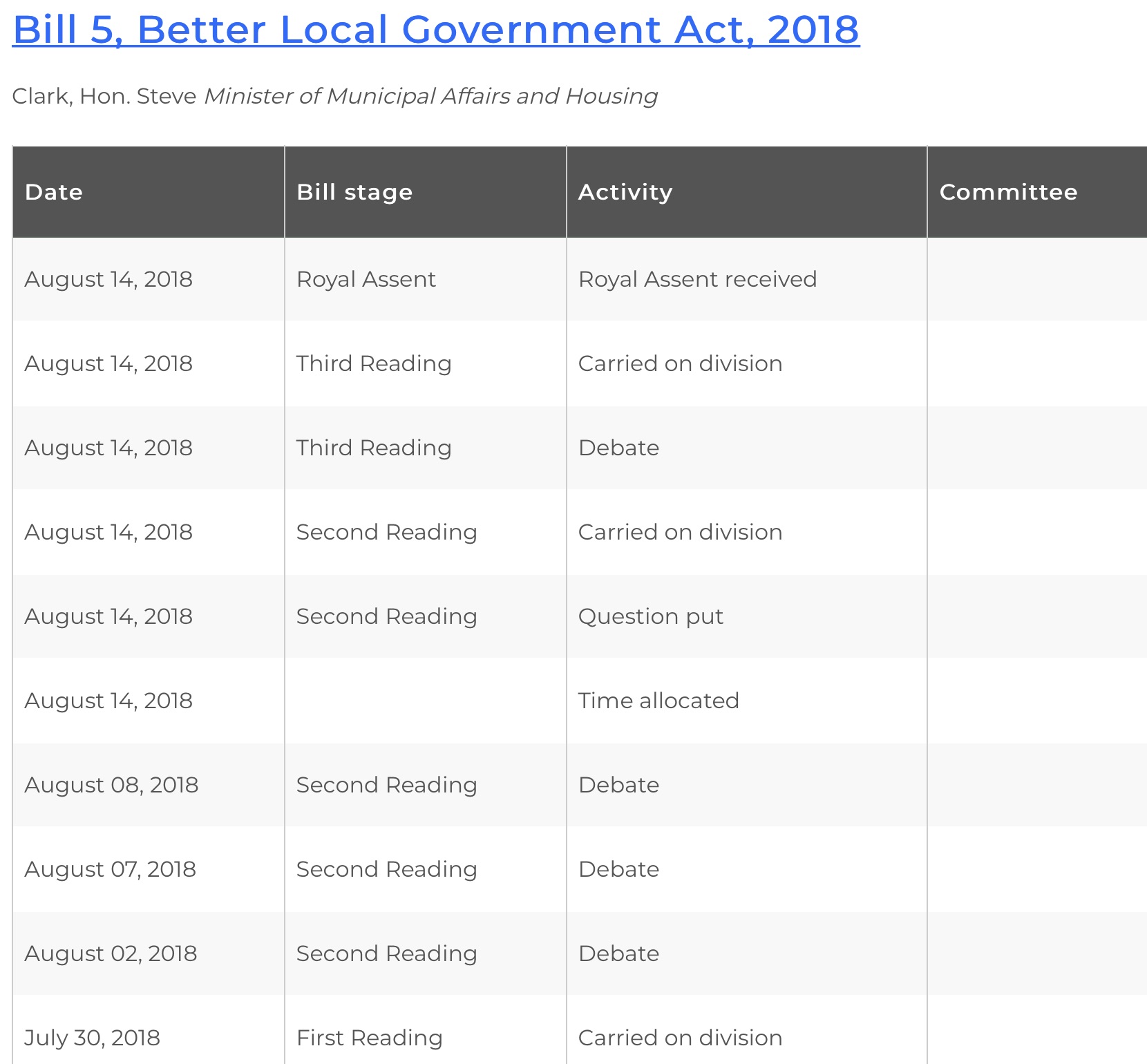
This email address is being protected from spambots. You need JavaScript enabled to view it.
Update on 15 August 2018: Christine Elliott did not vote on the timetable motion nor on the second and third readings of Bill 5 on 14 August 2018.
During yesterday’s debate Ottawa Liberal MPP Nathalie Des Rosiers told the Chamber:
“I had the legislative library do a little bit of research for me. I asked them, “Has it ever been done in Ontario or in Canada to change the rules, to introduce a bill changing the rules on elections, while an election has been called?” The answer? Never. It had never been done in Ontario. They looked at every province, and this has never been done.”
- Details
- Written by Gordon Prentice
Thursday at 1.45pm.
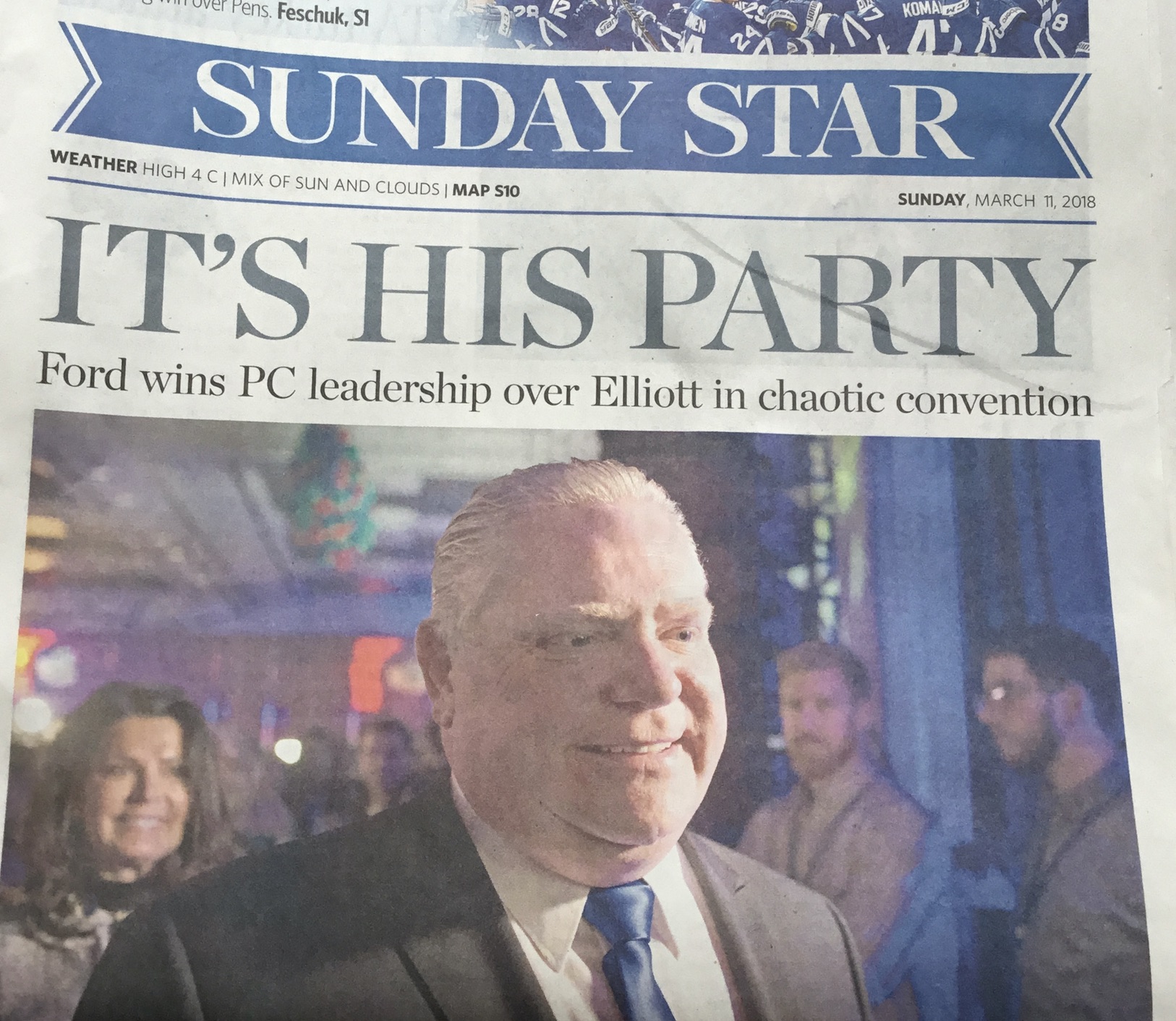
The Ford Government has now ruled out any consultations with the public on Bill 5 (the Better Local Government Act).
At Queen’s Park this morning (Thursday 9 August 2018) the Government introduced a so-called “timetable motion” or “guillotine” which severely restricts the time available to consider the proposed legislation. (See the text below.)
The Official Opposition in response tabled an amendment to the Government’s motion which was accepted by the Chair. This means it will go to a vote.
The NDP amendment seeks to commit the Bill to the Standing Committee on General Government which would hold public hearings on August 20thand 22nd from 2pm-8pm. Those appearing before the Committee would be selected on a first-come first-served basis. Under the terms of the NDP amendment the Committee would have to complete its consideration of the Bill by 30 August when it would have to report to the House.
Clearly, the amendment will be voted down by the PC Government – despite what its leading members have said about timetable or guillotine motions in the past.
In an entertaining speech this morning, the NDP Member for Timiskaming-Cochrane, John Vanthof, drew attention to the hypocrisy of PC Ministers Steve Clark, Todd Smith and John Yakabuski who have all said critical things about timetable motions in the recent past.
In their own words they have all condemned timetable motions as undemocratic. But now they are dancing to their Master's tune and will be voting to curtail debate.
Update on 10 August 2018: Toronto Mayor John Tory urges Ford to think again about cutting the Council in half.
This email address is being protected from spambots. You need JavaScript enabled to view it.
"Time after time, we’ve had negotiations where all of a sudden the government stops talking to us and presents bills that will either choke off debate or move bills through quickly without hearing from constituents".
Steve Clark MPP (now Minister of Municipal Affairs and Housing) 28 May 2015
"Sometimes what happens here—my friend from Renfrew–Nipissing–Pembroke describes it as the guillotine coming down and slicing off debate. He makes a very effective sound effect every time the House leader or deputy House leader moves a closure motion. We’ve seen that time and time again. They should not be using a blunt instrument—and a guillotine is not a blunt instrument—to pass legislation in this House."
Todd Smith MPP (now House Leader) 13 April 2016
"Well, how can something be duly considered if you haven’t even had the opportunity to debate it? How can you say that something has been duly considered if you haven’t even allowed the public, the stakeholders—those people who will be most affected by it, those people who will be responsible for carrying it out—the opportunity to offer opinion or views as to how that legislation might be changed, altered, improved, or have some parts of it swept away altogether, because they’re not in the best interests of the people who will be most affected?
… But if you are not considering the views of others, if you’re not considering the right of the opposition to bring a different view that might make that legislation stronger, then you are not acting in the best interests of democracy."
John Yakabuski (now Minister of Transportation) 7 May 2018
Government Notice of Motion Number 4 (Timetable motion) tabled this morning:
Mr. Smith (Bay of Quinte) — That, pursuant to Standing Order 47 and notwithstanding any other Standing Order or Special Order of the House relating to Bill 5, An Act to amend the City of Toronto Act, 2006, the Municipal Act, 2001 and the Municipal Elections Act, 1996, when Bill 5 is next called as a Government Order, the Speaker shall put every question necessary to dispose of the Second Reading stage of the Bill, without further debate or amendment, and at such time the Bill shall be ordered for Third Reading, which order may be called that same day; and
That, when the Order for Third Reading of the Bill is called, 1 hour shall be allotted to the Third Reading stage of the Bill, with 30 minutes apportioned to the government, 10 minutes to Her Majesty’s Loyal Opposition, 10 minutes to the Liberal party independent members and 10 minutes apportioned to the Green party independent member. At the end of this time, the Speaker shall interrupt the proceedings and shall put every question necessary to dispose of this stage of the Bill without further debate or amendment; and
That, except in the case of a recorded division arising from morning Orders of the Day, pursuant to Standing Order 9(c), no deferral of the Second Reading or Third Reading vote shall be permitted; and
That, in the case of any division relating to any proceedings on the Bill, the division bell shall be limited to five minutes, except that the division bell for the vote on the motion for Third Reading shall be 15 minutes.
- Details
- Written by Gordon Prentice
Newmarket’s retiring Mayor, Tony Van Trappist, has for years dined out on our dollar.
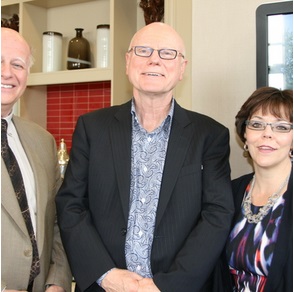
I don’t begrudge him his tasty lunches and his delicious butter tarts when he is conducting Town business. But shouldn’t we know who the Mayor is meeting and for what purpose?
At the moment it’s a complete mystery. He just bills the Town.
The routine reporting of Mayoral expenses in February each year gives a long list of local restaurants where Town business is carried out but there is no indication of the nature of the business transacted nor who initiated the invitation. I was curious to learn more.
This goes beyond mere nosiness. It is good public administration for this information to be out in the open. The sums involved are tiny but there’s a big principle at stake. Transparency is a good thing.
One-to-one
Back in 2016 I asked Van Trappist and all other elected officials if they had any meetings with the Clock Tower developer Bob Forrest when staff had not been present. I also asked about any other one-to-one interactions. In his written reply the Mayor said there were no discussions with the developer but later, in front of a packed Council Chamber, he offered a different version of events.
“There may have been one or two conversations but they’ve been general in nature. They were about the project overview, the planning process and community issues.”
This begs the question… Why wouldn’t a developer want to meet the Mayor and other elected officials?
Bob Forrest has never made any secret of the fact that the Forrest Group gets results:
"by leveraging our strong reputation and existing relationships with municipal staff and politicians".
Millions of dollars can turn on a planning decision. In the case of the Clock Tower Forrest told his colleagues the project (now mercifully rejected by the Town) would deliver a profit of $10 million.
It makes sense for developers to work on building a good relationship with elected officials and I don’t have a problem with this - so long as the rest of us aren’t treated like mushrooms and kept in the dark.
Newmarket is slated to grow rapidly especially along the Yonge and Davis corridors. The Town is designated as a Place to Grow yet it does not have a Lobbying Register. It should have. So it is good to see Regional Council candidate, Chris Emanuel, calling for one.
Why is it so difficult to find out who the Mayor is taking to lunch?
I picked a year at random (2015), put in my Freedom of Information request and paid my $75 to find out who the Mayor was having lunch with and for what reason. (It costs $75 because this basic information is not routinely collected and special arrangements have to be made to sift through receipts).
I notice there are lunches with local residents and community volunteers. In Newmarket this goes with the job of Mayor. And there are occasional lunches with elected officials. I am not so sure about this. I am left wondering why they can’t discuss Town business at the Town Hall - or at least pay for their own lunches. Van Trappist had lunch with Councillor Persechini from East Gwillimbury and a developer in July 2015 for the purpose of “introductions” and another with Redwood Properties. And that’s pretty much it.
Van Trappist likes developers. He has a very black and white approach to development. You are either for it or against it. There are no shades of grey.
“In nature, there are two processes, growth and decay. If development stopped all together, the burden on the average taxpayer would increase significantly.”
Lobbying Register needed
As it happens, I didn’t see any lunches with developers in 2015 other than the one with Councillor Persechini from East Gwillimbury and one with people from Redwood Properties (who now have planning permission to build on the former Slessor Square site opposite Upper Canada Mall). And these are only on the list because the Town picked up the tab - or the Mayor's share. Of course, if the developer paid there would be no record of the meeting whatsoever and what, if anything, transpired. That’s where the Lobbying Register fits in, coupled with a robust Freedom of Information regime.
I had always assumed that replies to Freedom of Information requests were automatically posted on the Town’s website but I now find that is not the case. If the material is “voluminous” it is not posted. Or there may be privacy considerations where information lawfully supplied to a private individual is withheld and not posted on the grounds it becomes searchable by Google.
For some reason the reply to my Freedom of Information request about the Mayor’s lunches is not posted – or wasn’t the last time I looked. So I am posting it here.
Hopefully this information will be routinely collected in future and will be posted on the Town’s website as part of the annual statement on the Mayor’s remuneration.
This email address is being protected from spambots. You need JavaScript enabled to view it.
Here is Toronto’s Lobbyist Registry. There are many other municipal examples.
And here (below) is my Freedom of Information request covering the year 2015
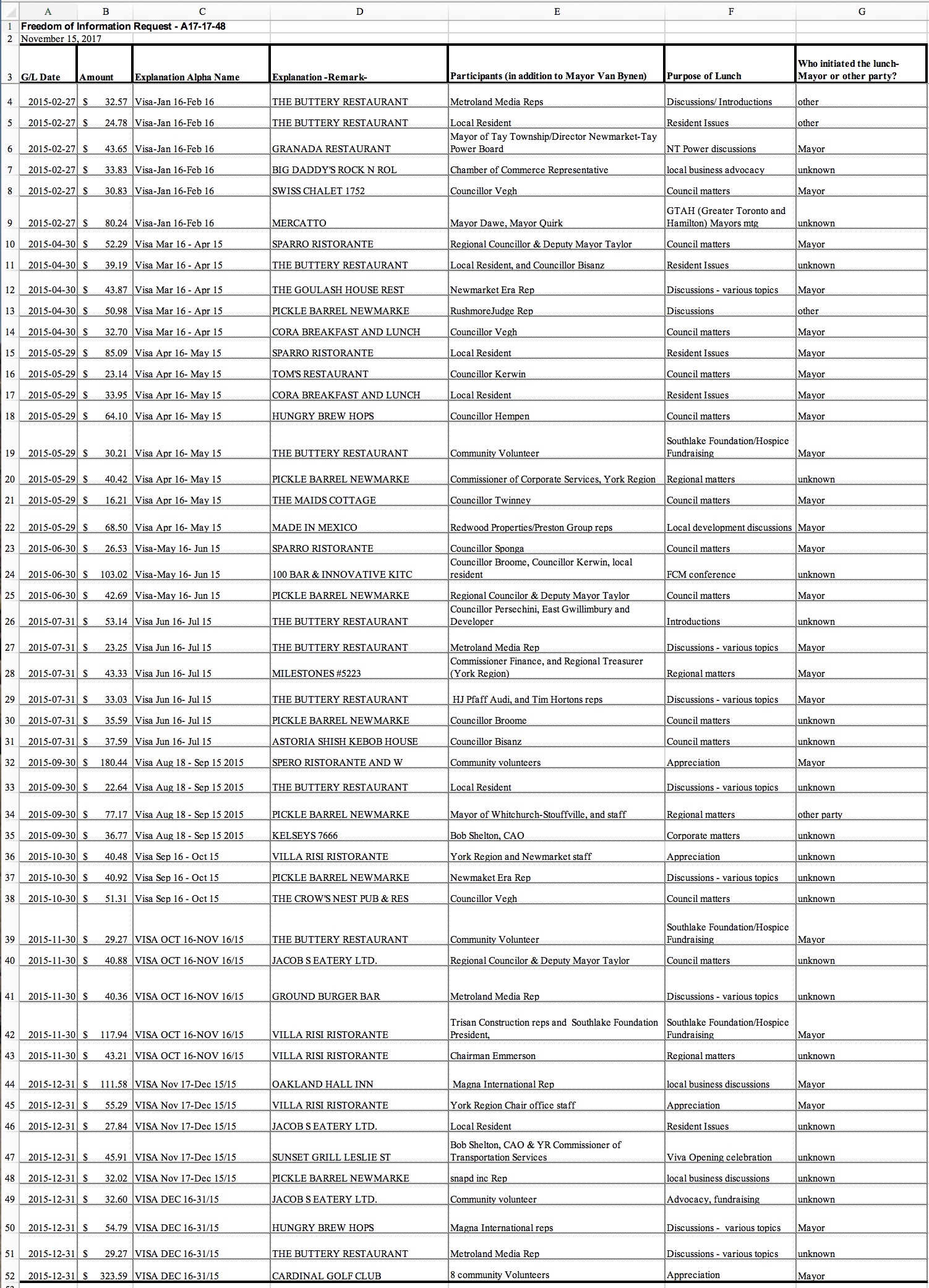
- Details
- Written by Gordon Prentice
PC MPP Paul Calandra says those “elected” to York Regional Council were opposed to the direct election of the Regional Chair.
In the resumed second reading debate on Bill 5 on 7 August 2018 he told MPPs:
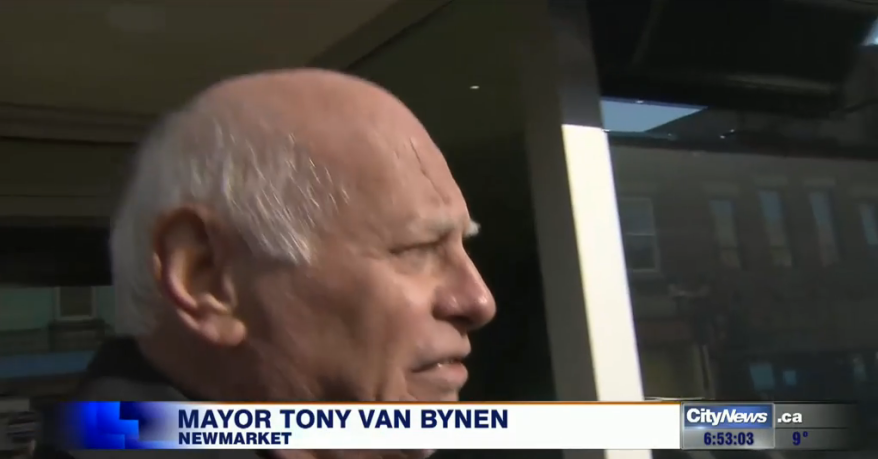
“Part of what we had decided to do with Bill 5 was to put an end to regional council chair elections that were supposed to be scheduled for this year. Now, at the outset, obviously a lot of people have suggested on both sides of the House that direct election of a regional chair would be a good thing. But in this particular instance, the people of York region, in particular those who were elected to the regional council, were very, very clear on the fact that they were not in support of the changes to the council that had been proposed by the previous government. It, of course, was a bill that I think was put in as part of an economic statement by the previous government. All of the mayors who serve on regional council voted against that. In fact, I think only four members of the entire regional council had voted in favour of direct election of the chair.”
In fact, in backing the status quo many Mayors voted against the express wishes of their own municipalities.
Newmarket Mayor, Tony Van Trappist, shamefully voted in favour of appointing the Regional Chair when his own council voted 7-1 in favour of direct election.
The municipalities of East Gwillimbury, Markham and Aurora also voted for direct election with their Mayors voting against at York Regional Council.
Whitchurch Stouffville voted in favour of direct election with the Mayor voting at the Regional Council in line with that mandate.
The Mayor of Georgina voted against direct election but her council had not taken a view.
I don’t immediately recall how the municipalities of King, Vaughan and Richmond Hill voted but their Mayors all voted against direct election when the matter came up at York Regional Council.
And, to correct Paul Calandra's statement, five members of York Regional Council voted in favour of direct election – not four.
This email address is being protected from spambots. You need JavaScript enabled to view it.
See also: Paul Calandra appointed to the new Ministry of Truth.
Page 146 of 287